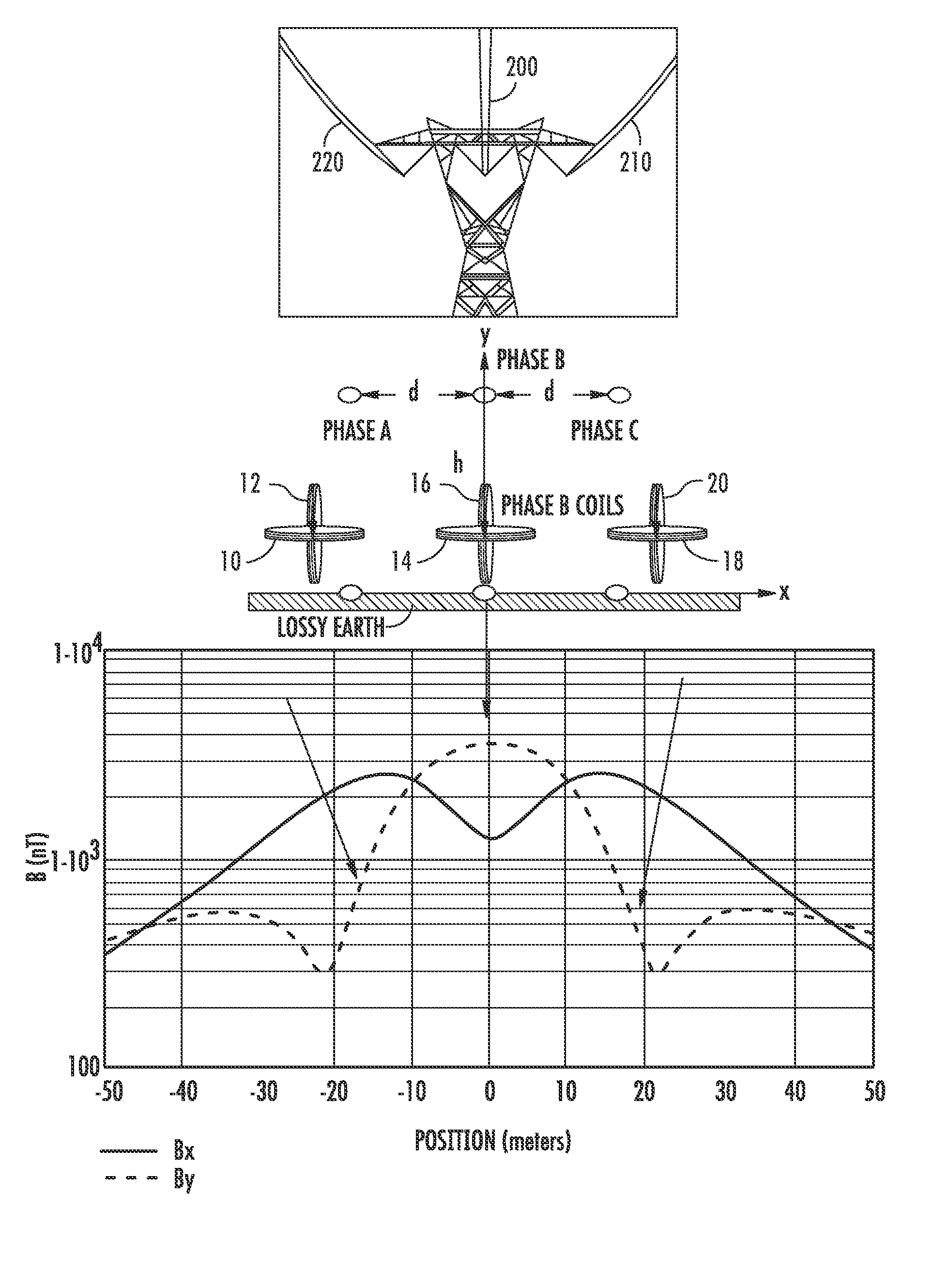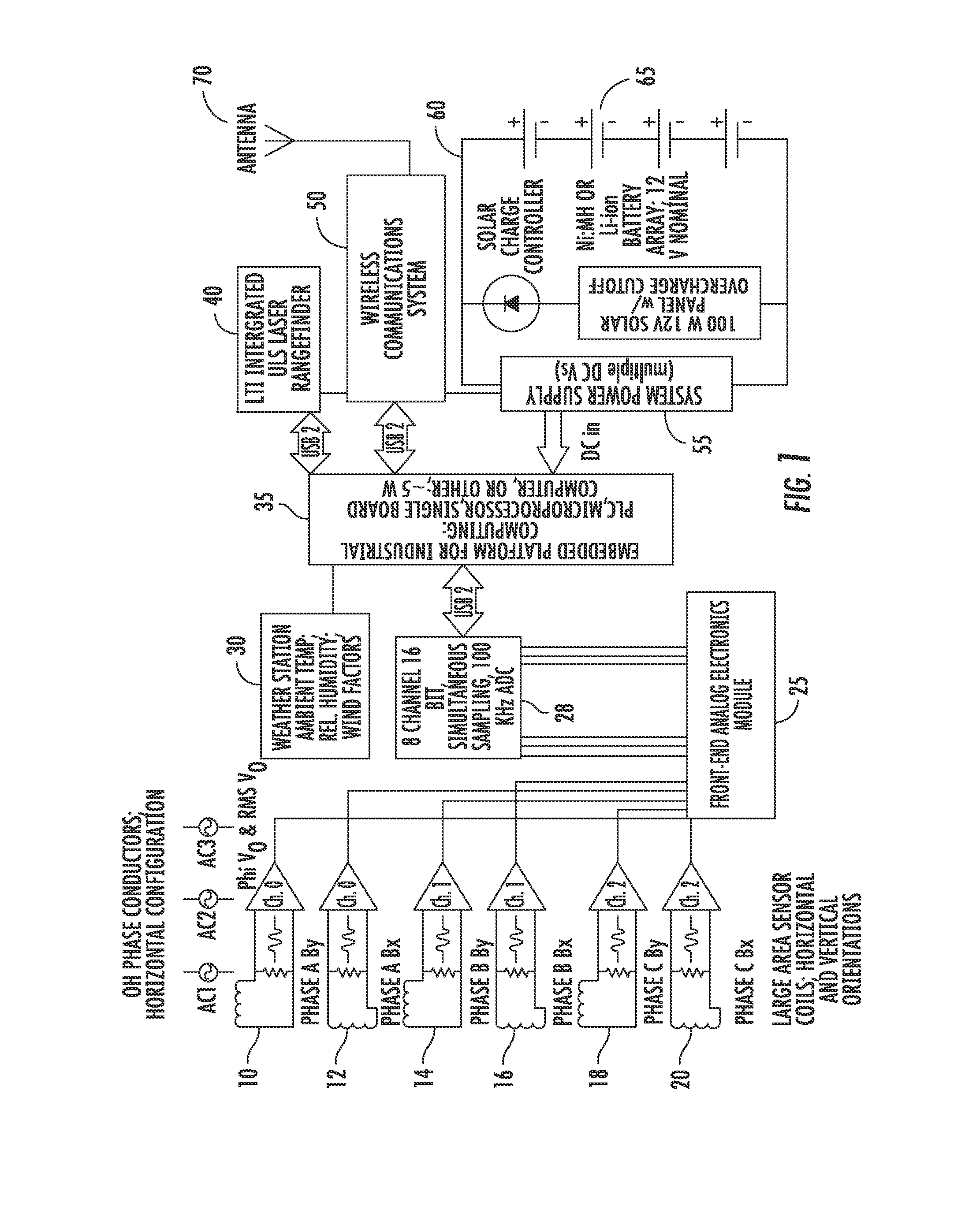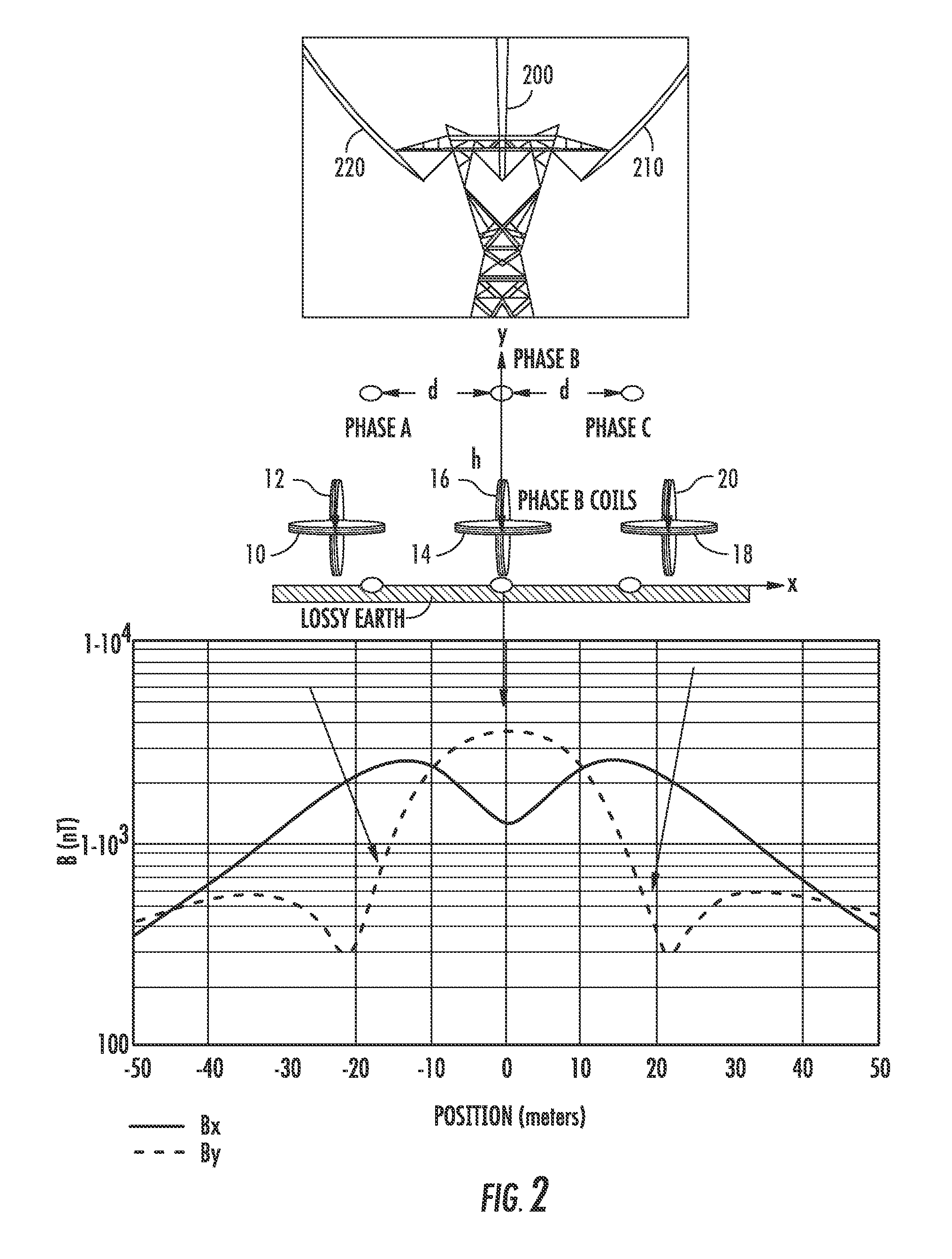Sensor, Method and System of Monitoring Transmission Lines
a transmission line and sensor technology, applied in the direction of instruments, digital computer details, electric devices, etc., can solve the problems increasing the cost of installation, and increasing the cost of the total installed cost of the existing real-time monitoring and dynamic thermal circuit rating system, and achieving the effect of increasing the number of transmission lines
- Summary
- Abstract
- Description
- Claims
- Application Information
AI Technical Summary
Benefits of technology
Problems solved by technology
Method used
Image
Examples
Embodiment Construction
[0028]High voltage overhead phase conductors are very long, gentle catenaries, the electro-mechanical characteristics and behavior of which have been intensely studied are very well understood1. The quasi-lineal phase conductors generate time-varying magnetic fields that, at 60 Hz, may be treated quasi-statically. The field strength at any location can be measured very accurately and, if measured simultaneously at multiple, spatially distinct locations, used to determine accurately the distance to the conductors. The distance, in turn, can be used to determine the sag of the conductors; given this, the average conductor temperature, current phase angle, and magnitude of the current can be accurately established.
[0029]The magnetic field, H, around a phase conductor has magnitude, H=I / 2πr, where r is the distance to the conductor and I is the phase current. In three-phase transmission circuits, the phase currents, I1, I2 and I3, are 120 degrees out of phase, vary widely over the cours...
PUM
 Login to View More
Login to View More Abstract
Description
Claims
Application Information
 Login to View More
Login to View More - R&D
- Intellectual Property
- Life Sciences
- Materials
- Tech Scout
- Unparalleled Data Quality
- Higher Quality Content
- 60% Fewer Hallucinations
Browse by: Latest US Patents, China's latest patents, Technical Efficacy Thesaurus, Application Domain, Technology Topic, Popular Technical Reports.
© 2025 PatSnap. All rights reserved.Legal|Privacy policy|Modern Slavery Act Transparency Statement|Sitemap|About US| Contact US: help@patsnap.com



